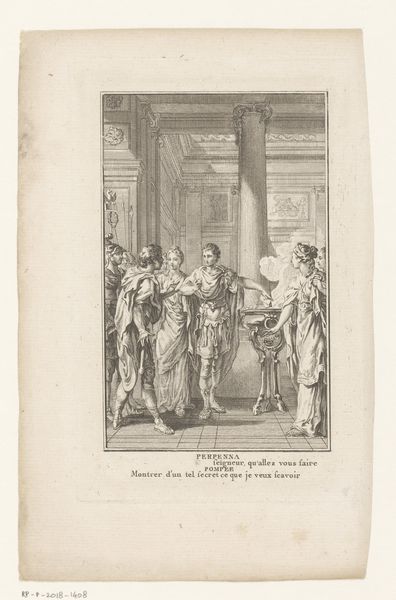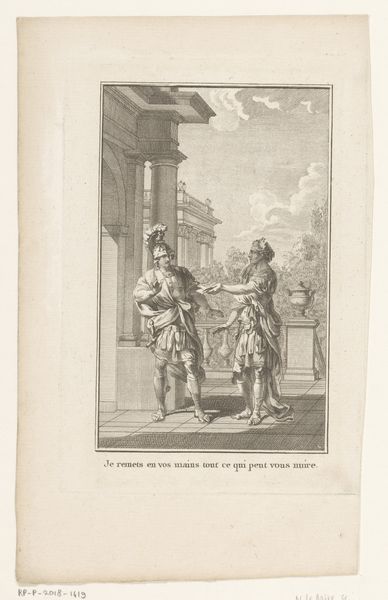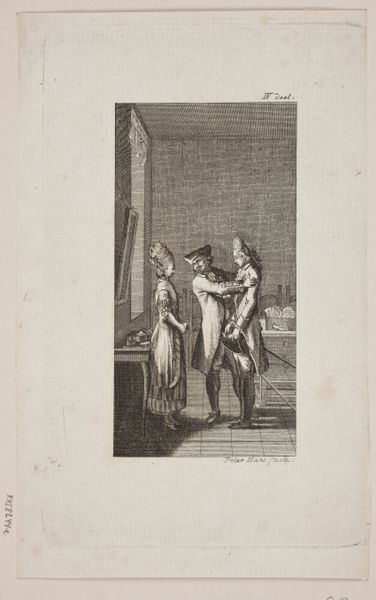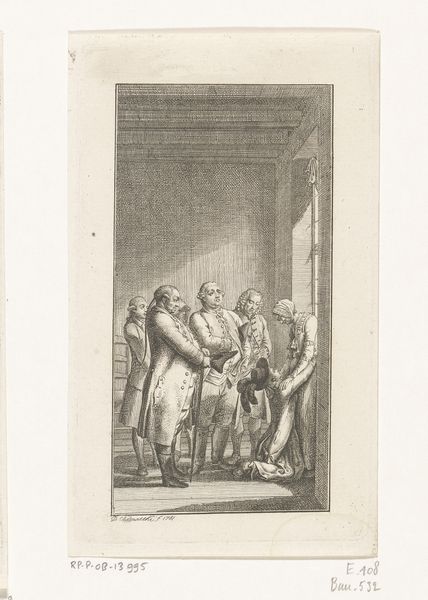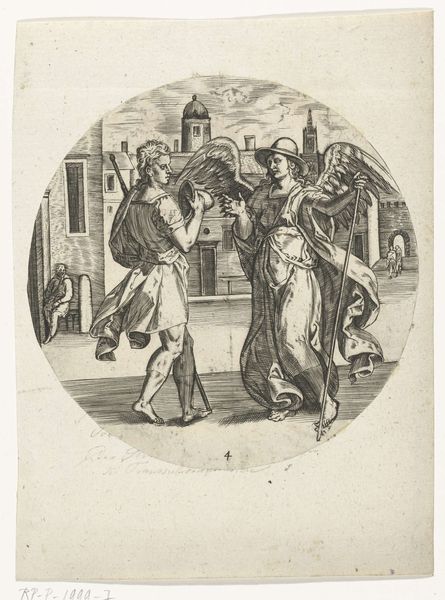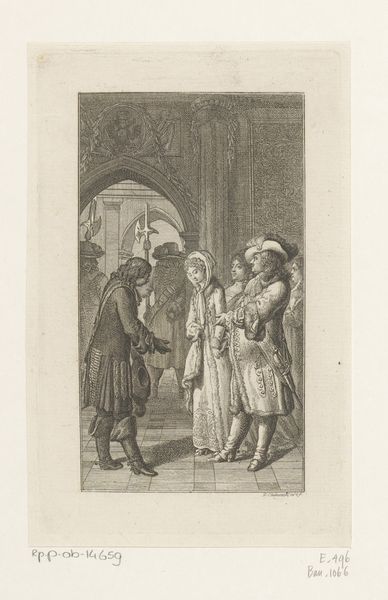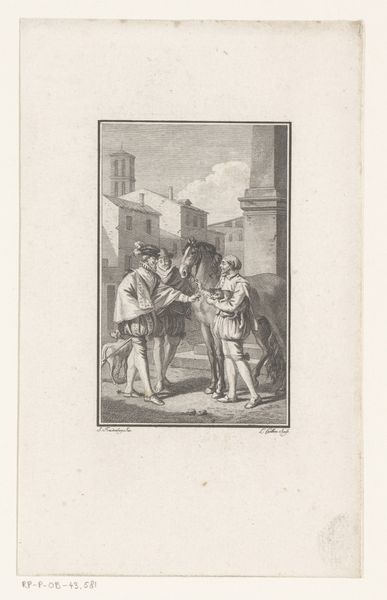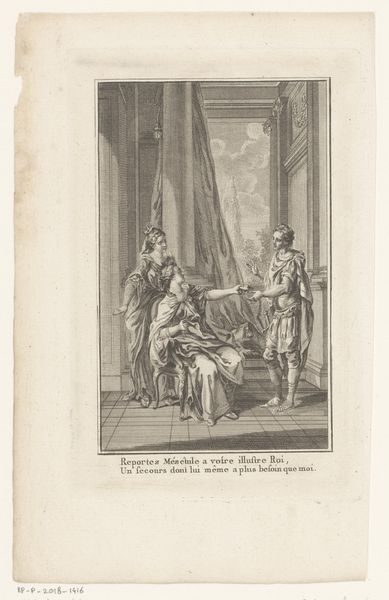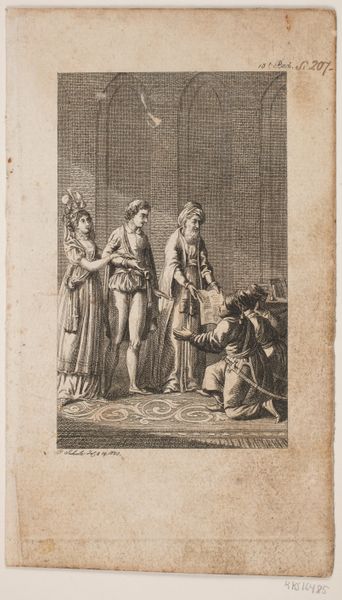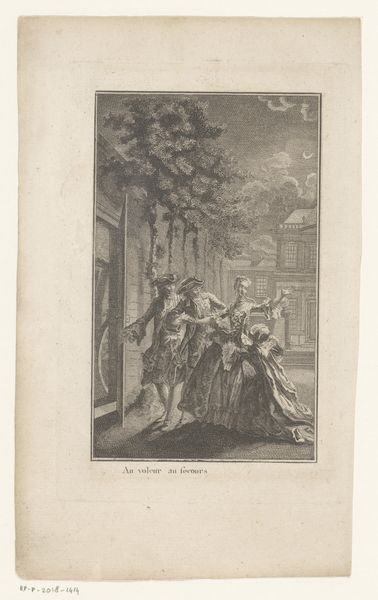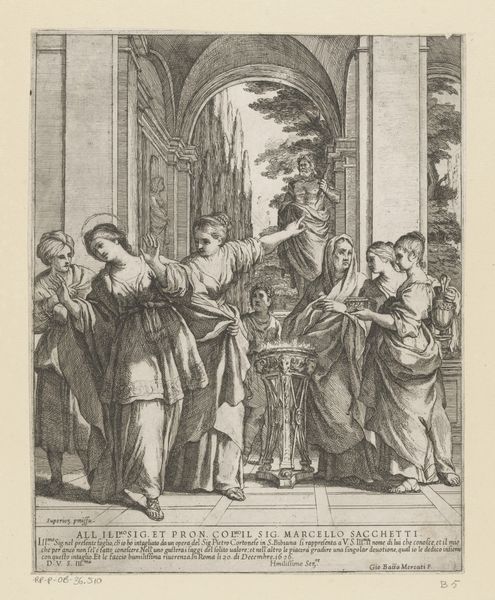
print, engraving
#
neoclacissism
# print
#
old engraving style
#
figuration
#
line
#
history-painting
#
academic-art
#
engraving
Dimensions: height 166 mm, width 107 mm
Copyright: Rijks Museum: Open Domain
Curator: This print, created by Noél Le Mire between 1763 and 1764, depicts Iphicrates en Phorbas. The medium is engraving. Editor: Immediately, the composition strikes me as incredibly stage-like. The characters are posed almost theatrically, and the architecture seems to frame them. There's a formality to the scene, despite the apparent interaction. Curator: That theatrical quality makes sense when you consider the conventions of academic art at this time, reflecting Neoclassical ideals and line work style. This emphasis on historical and mythological subjects intended to uplift the viewer morally. Notice the strong outlines around the bodies giving them volume. Editor: And I can't help but see how these representations, though historical, also served to reinforce certain power structures. The men are depicted in positions of authority, with very deliberate, masculine gestures and costumes, upholding traditional roles. How does that narrative function when displayed for consumption in, say, the Rijksmuseum today? Curator: Indeed. By displaying it, we acknowledge the complexity of the piece. We also understand, however, that its symbols continue to provoke emotional response because its style has embedded into western cultural memory. These images and the events represented within the artwork function to perpetuate specific values. The Neoclassical architecture provides stability for the drama portrayed here. Editor: So, in effect, the weight and impact of history are concentrated onto the represented people through the lens of colonialism. This is still significant. By dissecting this, and viewing these artworks as active agents, we reveal more nuanced understanding that acknowledges the art’s problematic colonial framework in its production. It highlights and raises a much larger discussion, though potentially causing cultural trauma if presented without the added layers. Curator: Ultimately, engaging with works like this invites us to consider our own place within this ever-evolving narrative. To reconsider. Editor: Absolutely, and that invitation to critique and re-evaluate is crucial for engaging with our past to reshape our present.
Comments
No comments
Be the first to comment and join the conversation on the ultimate creative platform.
